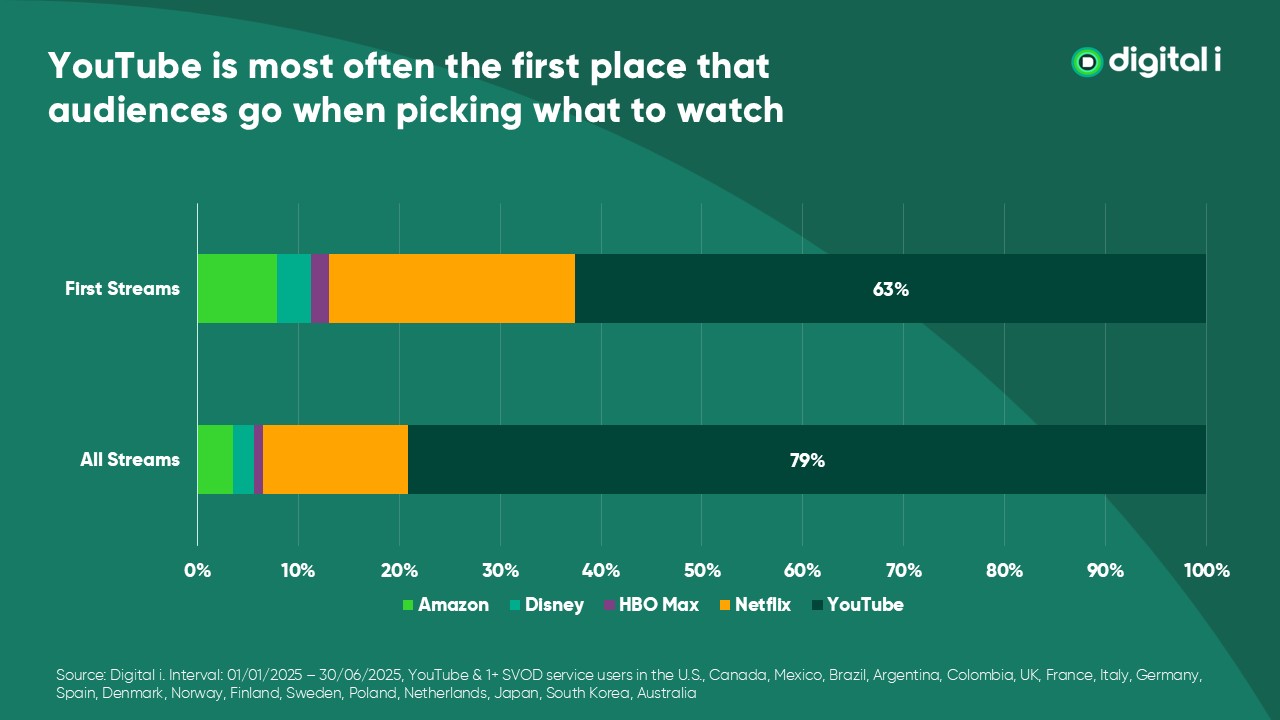
YouTube is the biggest competitor to SVOD platforms in the fight for audience attention and advertising revenue, but the varying ways that consumers make use of these different services demonstrates the advantages and strengths of each.
Digital i founder Ali Vahdati recently spoke on this topic at ASI Copenhagen 2025, giving two presentations that both explored how YouTube and streamers such as Netflix, HBO Max, Disney+ and Amazon's Prime Video compete with and complement one another.
Our research into four of the biggest global children’s IP (Peppa Pig, Barbie, LEGO and Pokémon) shows that content reach was uniformly higher on Netflix than on the official YouTube channels for these brands during 2024 - though those channels still reached tens of millions of users.
However, the reach of user-generated content on YouTube eclipsed that of both the official channels and streaming to a staggering degree.
For example, in the chart above, 16.22 million accounts viewed LEGO content on Netflix last year, and 12.92 million viewed the official LEGO YouTube account – while a whopping 214.46 million engaged with the brand elsewhere on the platform.
It is a clear indication of both the large reach that both YouTube and SVOD can provide, but how YouTube can be used to massively extend that reach as consumers and content creators engage with brands in their own way.

When the same content exists on both YouTube and SVOD services, viewers prefer the more engaging streaming experience over those official YouTube channels.
Our research into platform preference for consumers who hold both a YouTube account and a relevant streaming account suggests this is particularly true for kids’ content (as with titles in the chart above), which show a strong loyalty to streaming platforms.
However, YouTube is most often the first stop when viewers watch something in a given day. Our data for H1 2025 (below) shows that more than 60% of first streams from our measured services occurred on YouTube, this was followed by Netflix with nearly 15% of first streams. Prime Video, Disney+ and HBO Max followed in that order.
All of our measured streaming platforms performed disproportionately higher when it came to first streams if compared to their total volume of streams, with our data showing YouTube dominance not only as a first port of call but also as a platform of choice throughout the day.
This data was taken from our two ASI Copenhagen 2025 presentations, Cross-Platform Clarity and Reaching Beyond, click on the links to to view the full decks.





.jpg)
.jpg)




